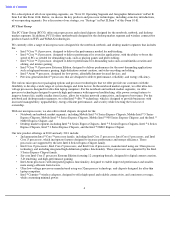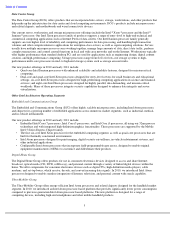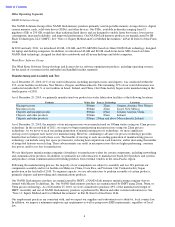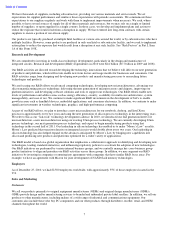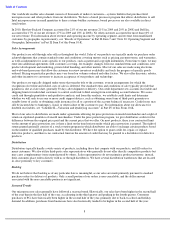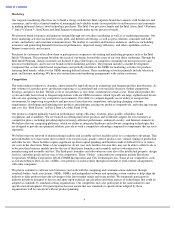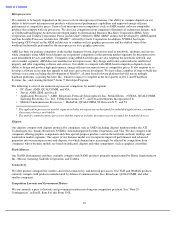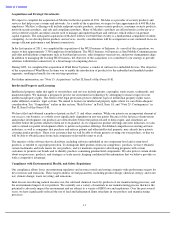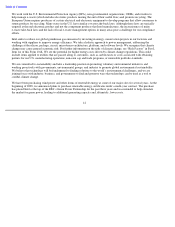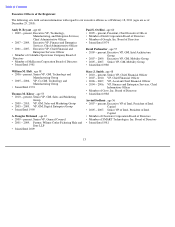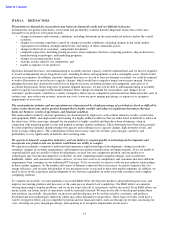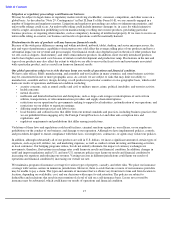Intel 2010 Annual Report Download - page 21
Download and view the complete annual report
Please find page 21 of the 2010 Intel annual report below. You can navigate through the pages in the report by either clicking on the pages listed below, or by using the keyword search tool below to find specific information within the annual report.
Table of Contents
We work with the U.S. Environmental Protection Agency (EPA), non-governmental organizations, OEMs, and retailers to
help manage e-waste (which includes electronic products nearing the end of their useful lives) and promote recycling. The
European Union requires producers of certain electrical and electronic equipment to develop programs that allow consumers to
return products for recycling. Many states in the U.S. have similar e-waste take-back laws. Although these laws are typically
targeted at the end electronic product and not the component products that Intel manufactures, the inconsistency of many
e-waste take-back laws and the lack of local e-waste management options in many areas pose a challenge for our compliance
efforts.
Intel seeks to reduce our global greenhouse gas emissions by investing in energy conservation projects in our factories and
working with suppliers to improve energy efficiency. We take a holistic approach to power management, addressing the
challenge at the silicon, package, circuit, micro/macro architecture, platform, and software levels. We recognize that climate
change may cause general economic risk. For further information on the risks of climate change, see “Risk Factors” in Part I,
Item 1A of this Form 10-K. We see the potential for higher energy costs driven by climate change regulations. This could
include items applied to utilities that are passed along to customers, such as carbon taxes or costs associated with obtaining
permits for our U.S. manufacturing operations, emission cap and trade programs, or renewable portfolio standards.
We are committed to sustainability and take a leadership position in promoting voluntary environmental initiatives and
working proactively with governments, environmental groups, and industry to promote global environmental sustainability.
We believe that technology will be fundamental to finding solutions to the world’s environmental challenges, and we are
joining forces with industry, business, and governments to find and promote ways that technology can be used as a tool to
combat climate change.
We have been purchasing wind power and other forms of renewable energy at some of our major sites for several years. At the
beginning of 2008, we announced plans to purchase renewable energy certificates under a multi-year contract. The purchase
has placed Intel at the top of the EPA’s Green Power Partnership for the past three years and was intended to help stimulate
the market for green power, leading to additional generating capacity and, ultimately, lower costs.
12


